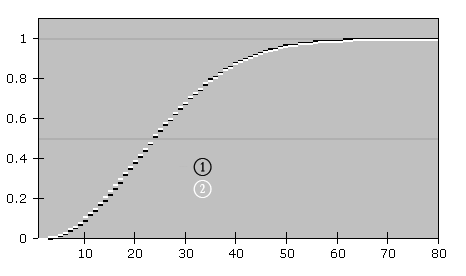The Birthday problem... amazing !!!

According to the "\(\color{Blue}{ \text{Pigeonhole}- \text{principle}}\) " we know that if in a given set of people , you want to make sure there are 2 people with \(\color{Blue}{same}\) \(\color{Blue}{ birthdays}\) then you have to get 367 people in the set. (There are 366 choices for a birthday , therefore)
But do you know that % probability of 2 people having same birthdays is actually achieved even in a set of 23 people !!!!!
And what's even more exciting is , % probability is for the set of 70 people !!!!!
So hard to believe, but I have a mathematical function to show this, I saw it on the Wikipedia Page
Here, the probability of people having same birthday will be given by
.. (probability in set of people) =
That is
The graph of probability (of course it won't be a continuous graph because number of people has to be an integer) is as shown in attached image.
This shows how rapidly the graph grows in first few numbers.....
To know more about this problem, go to the wikipedia page ....
Easy Math Editor
This discussion board is a place to discuss our Daily Challenges and the math and science related to those challenges. Explanations are more than just a solution — they should explain the steps and thinking strategies that you used to obtain the solution. Comments should further the discussion of math and science.
When posting on Brilliant:
*italics*or_italics_**bold**or__bold__paragraph 1
paragraph 2
[example link](https://brilliant.org)> This is a quote# I indented these lines # 4 spaces, and now they show # up as a code block. print "hello world"\(...\)or\[...\]to ensure proper formatting.2 \times 32^{34}a_{i-1}\frac{2}{3}\sqrt{2}\sum_{i=1}^3\sin \theta\boxed{123}Comments
Actually if you think about it and calculate the numbers you can get this easily... it isn't rocket science.
Log in to reply
But it is really not felt at the beginning that 50% probability will be achieved by 6% of the population needed to assure 100% probability !!!! @Joshua Ong .... that's why i felt like sharing here....it's very easy yet totally never tried thing, many people might have never tried to know what number of people gives what probability.... nothing new technique... but unexpected results !